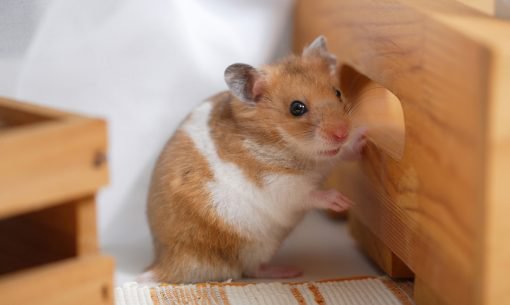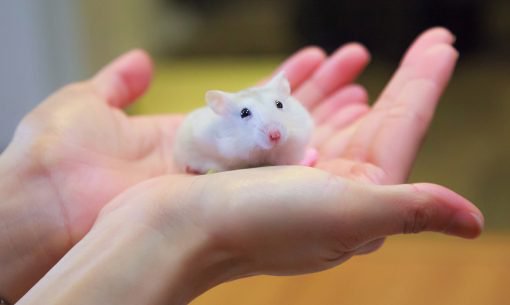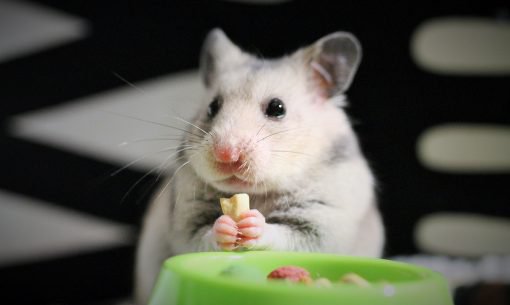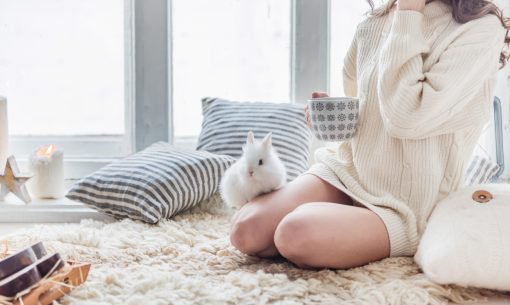What do you need for a hamster? How to get your new friend settled in!
Hamsters make adorable and entertaining pets – these cheeky chappies always keep us amused with their antics! When you’re taking on a new hamster, there are loads of things to think about from finding the right cage to choosing good bedding and food. If you’re wondering what to do when you first get a hamster, we’ve put together this blog to help you out.
What is the best cage for a hamster?
When you’re setting up home for your new hamster, the first thing to decide is which home to buy! Let’s start with the size: the cage needs to be big enough for your new pet to get the exercise they need. Hamsters in the wild are surprisingly active creatures, and can easily scurry around for several miles each night in search of food. So even though they’re tiny, they need a fair amount of space to be happy. The Blue Cross recommends that the cage should be at least 60 x 30 x 30cm for dwarf hamsters and 80 x 50 x 50cm for Syrian hamsters, but this is just the minimum and bigger is always better!
Hamster cages come in different sorts and the right option will depend on your situation and your pet. In general, the main types to choose between are wire cages, plastic modular cages and tanks.
Wire cages with plastic bases allow good ventilation and they’re easy to clean. With this type of cage it’s best to choose one with a deep base, as this means you can give your new friend a really thick layer of bedding that they can burrow happily away in. Many of the wire cages out there are designed to suit Syrian hamsters, so if your pet is a smaller dwarf hamster, just check that the space between the bars is narrow enough to keep their home secure.
Plastic cages or tanks are sometimes a safer option for little escapologists! These cages also suit hamsters who develop a persistent habit of chewing the bars of wire cages. Bear in mind that solid-sided cages don’t provide such good ventilation, though there will be some airflow if the cage has a wire lid. In general, better ventilation is normally a good thing, but solid-sided cages do provide more protection from draughts.
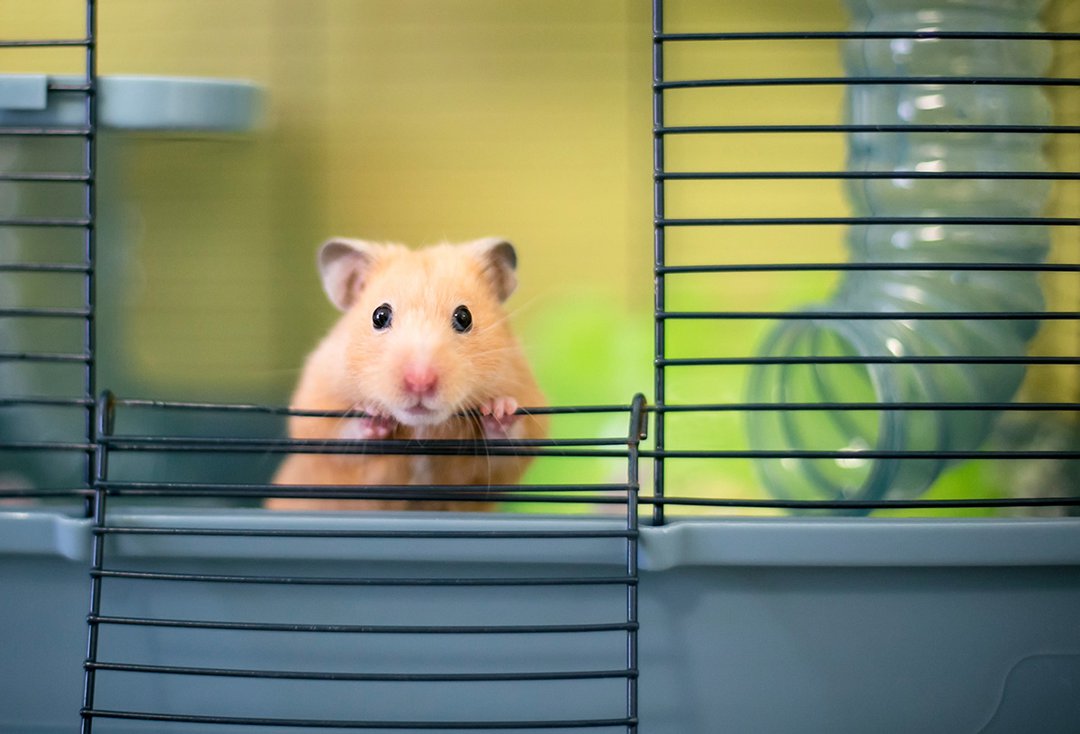
What do you need for a hamster home?
Once you’ve chosen the cage, there are a few pieces of hamster furniture you’ll need to add. The first thing to think about is a wheel – most cages will come with one already in place, but do just check that this is the right size for your pet. Some plastic cages are designed to suit dwarf hamsters, meaning the wheel might not be big enough for their Syrian pals.
The general rule of thumb is that hamsters shouldn’t have to arch their back to run on a wheel, as this can cause them health problems. Dwarf hamsters are usually fine with a wheel 6 inches in diameter, but Syrian hamsters may need an 8–12 inch wheel. It’s also better to go for solid rather than slatted wheels to reduce the risk of tiny limbs or toes getting caught and hurt.
While exercise wheels are a good way to help hamsters keep active, the same isn’t true for exercise balls. With their poor eyesight, hamsters may be disorientated when they’re in the ball, and banging into furniture can be an unpleasant shock! So rather than using a ball, it’s best to give your hamster a really big cage with lots of toys, and give them supervised exercise sessions in a safe place outside the cage.
Other items to provide for your new pet include a food bowl and water bottle, as well as a nesting box where they can curl up to rest and hide away if they choose. You can also think about a litter tray – believe it or not, we can toilet train our hamster friends! To do this you’ll need to let your hamster choose their preferred toilet area, then clean the cage and put the litter tray in that spot, adding some soiled bedding so that they work out what to do. It can take a bit of time for them to get the idea, but the payoff is that cleaning their cage will be easier in the end!
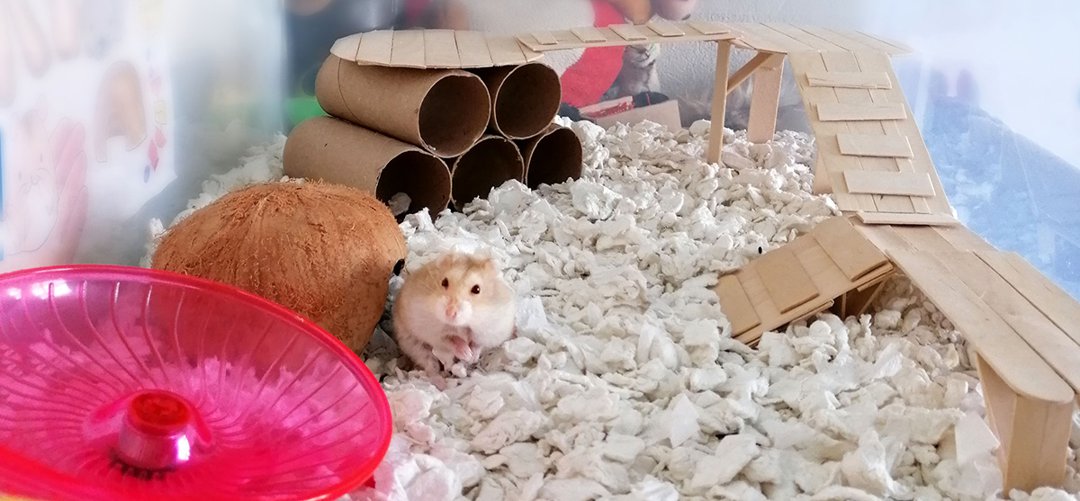
What bedding is good for hamsters?
After you’ve chosen the various bits and bobs for the cage, it’s time to think about how to make it comfy. So, how much bedding do hamsters need? Hamsters naturally burrow in the wild, so they love making tunnels in a nice thick layer of bedding on the cage floor. There are a whole range of bedding options out there, but it’s best to choose one that can make nice sturdy tunnels that won’t collapse. Tiny Friends Farm Eco Bedding is great for burrowing in, and since it’s made from surplus paper with eco-friendly energy, you can rest assured that you’re doing good for the environment too!
As well as the bedding on the floor of the cage, hamsters will need some nesting material in their shelter. For this, it’s best to avoid cotton wool style products as these can be risky if they’re eaten or get caught around your pet’s feet. Soft paper-based options can be safer.
Some hamster bedding is scented, but it’s safest to avoid these products as the smell is designed to please us rather than our pets! Hamsters have very sensitive noses and some scented products can be risky for their health.
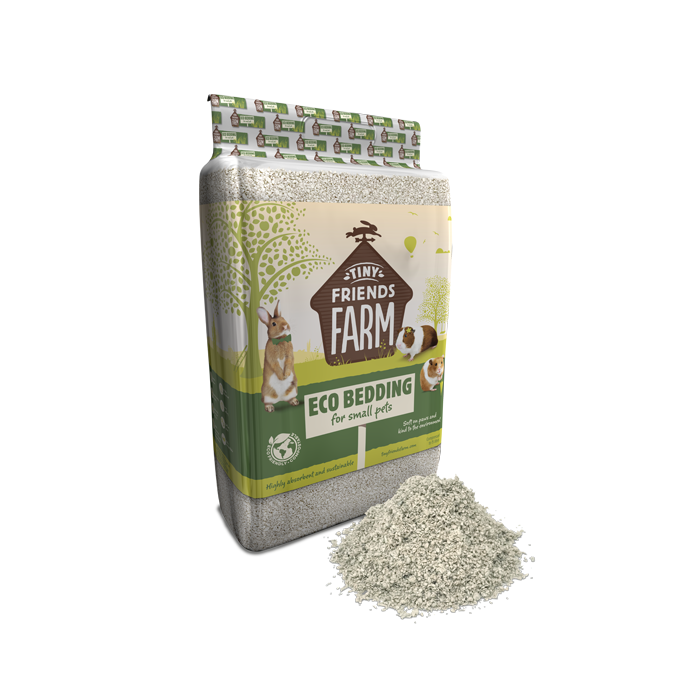
What food do hamsters eat?
Another important item for your hamster shopping list is food. Hamster foods come in two main types: single-component diets such as Science Selective Hamster or mixes like Harry Hamster Tasty Mix. Both options can give your furry friend all the nutrition they need to keep in the best of health.
If you opt for a mix diet, it’s important to choose it carefully. Some mixes include ’cold-pressed’ pellets, which are made by compressing the ingredients together under pressure. These pellets aren’t always super tasty though, meaning that hamsters sometimes choose to leave them behind in favour of the more interesting bits of the mix! In our Harry Hamster Tasty Mix, we use a tastier type of pellet that’s cooked at a higher temperature, making sure that hamsters love eating up all parts of their food.

How about bath time?
To give your hamster a sand bath, use a special absorbent bathing sand that is designed to help remove excess oils and make the fur clean and shiny, while being soft and kind on the skin. Harry, Charlie & Gerri Bathing Sand is one great option, and Science Selective Bathing Sand is another fab choice that is carefully formulated to feel silky smooth on tiny paws. For tips on how to bathe your pet, check out our blog.
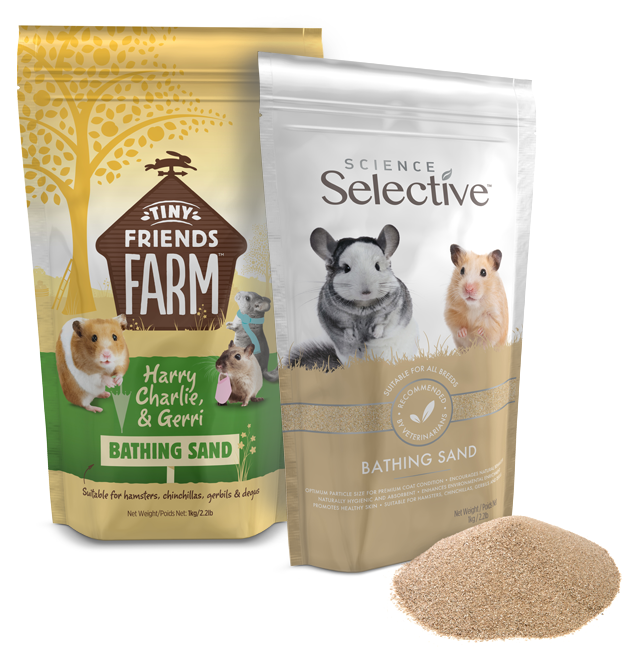
Adding a little fun
So that’s the basics for your new hamster home! But when caring for a hamster as a pet there are always more fun ideas you can use to keep your furry friend amused. Hamster toys such as tunnels and ladders can make the space more interesting, and chew toys are also useful for keeping your pet’s incisor teeth in good shape. In the wild, hamsters naturally keep active and wear their teeth down with chewing, so these toys will help them express their natural instincts.
Some treats can also be great for encouraging natural gnawing behaviour. Tiny Friends Farm Stickles with Honey and Seeds can be hung in the cage for your pet to have a good nibble on – a really delicious way of keeping their teeth in use!
Smaller treats like Hazel Hamster Lovelies can be hand-fed, and these are a real help when you’re taming your new friend.
Hamsters can be very shy when they’re getting used to their new family, and the lure of a tasty treat can help them muster up the courage to come to you. With treats, always remember not to feed to many, and to avoid options that are high in sugar. If you’d like to learn more about treats for small pets, check out our blog.


